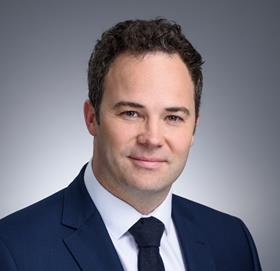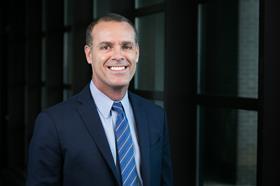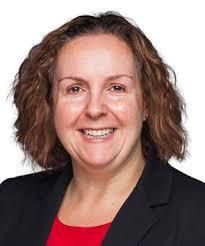The Covid-19 pandemic has seen the insurance industry’s conferences and networking events take a hit,with social distancing still in force as the UK faces a second wave and potential lockdown, innovation is still paramount. Insurance Times asks the industry how some brokers who rely heavily on face-to-face networking have adapted
Neil Thornton, managing director, retail division, GRP
Even in lockdown there is room for socially distanced meetings with clients. This industry is heavily based on strong personal relationships and a clear understanding of individual needs, so sometimes there is no substitute for face-to-face conversations, especially for more complex risks.
We’ve operated within the pandemic restrictions for six months, and despite fears of a second wave, we’re finding some clients are now asking to meet face-to-face. For clients who are happy with electronic meetings we can continue to work that way. There’s been a huge uptake in the use of “virtual” face-to-face networking – via Zoom, Microsoft Teams, social media forums etc. In some ways this makes it easier than ever to stay in touch – and virtual meetings tend to stick to the agenda and be more focussed - although of course this can be good or bad.

Every business is affected by the hardening market and tough economic environment, so even if their risk exposure is reduced, they are seeing insurance costs rising and are looking to brokers to help manage those costs.
Overall, it is incredible how quickly businesses have adapted. The use of tech for networking and relationship-building has accelerated, and many innovations will stay post-pandemic. We will not go back to trading how we did, but the insurance world is certainly not ready to operate in a virtual bubble.
Simon Matson, chief executive of UK broking and underwriting, Gallagher
2020 has been a year in which we have all had having to make changes to the way we do business. I believe we should be proud of the way we have adapted and continued to look after our clients, as well as winning new business and maintaining strong relationships with our network, albeit it via webex or phone.
Humans are social beings and many of us thrive on the unique energy we get from meeting our network in person and part of the reason the UK insurance industry is respected worldwide is the strength of the relationships that have been built up between insurers and brokers over many years.

I know I certainly miss meeting my contacts face-to-face, but we are all in this together and we have proved we can successfully work differently and, whilst networking will continue to play an important role in our industry, we should take the opportunity to capitalise on our learnings.
We should not forget the benefits of increased flexibility in working patterns not least the benefits of an improved work/life balance for our people, which in turn may help attract a much wider mix of people to insurance, which would be a positive outcome for our industry.
Ben Potts, managing director, Novidea UK
Face-to-face networking is at the heart of our social business and many, including myself, surely miss it. The recent announcement by Boris for another six months will not help, but it does highlight the need to push forward with digital transformation, which has already been accelerated by the pandemic.

Many brokers had already put their document management systems and e-mail (ie: Outlook 360) onto the cloud, which has helped.
However, few have done the same with their broking platforms. This has meant that these brokers simply have not been able to perform many tasks efficiently or have easy access to client, claims, and management reporting and analytics when away from their offices.
Savvy brokers already understood the benefits of digital, data, and connectivity. For them, even pre-pandemic, the need for actionable data insights was growing exponentially, along with cloud-based platforms that enabled them to work remotely from anywhere, anytime, with access to everything as if they were in the office.
It may be a while until we can all meet face-to-face, but this trend towards cloud-based solutions is set to continue, as other brokers already working in a challenging, highly competitive market are forced to catch up.
Branko Bjelobaba FCII, Principal - Branko Ltd
Covid numbers are getting worse daily and the Prime Minister made it clear on 22 September that office workers should work from home again should they have returned to the office. We have seen pictures of a deserted City of London and nothing is as what it was pre-16 March.
The FCA in the meantime, continue to assess the financial resilience of the sector as clearly this is a worrying time for brokers and their clients alike.
The traditional face-to-face approach of getting new clients ended earlier in the year. Bar personal connections it is impossible to network in the traditional way by attending events, business forums, etc, as these cannot be held (it would be difficult to call it a wedding or funeral if it were not!).

Branko Bjelobaba, Branko Ltd
So how do brokers gain new business in these difficult times? I guess going back to traditional ways - buying and then calling contact databases, looking online, going back to those that requested quotes a few years ago and, of course, virtual networking.
Some brokers may have a budget for local radio advertising and this form of advertising is still proving to be a successful way of getting in front of businesses. Leaflet drops may work but cold calling is likely to be resisted clearly. Not at all easy and when will we be able to go back to normal??
Jeffrey Skelton, managing director, LexisNexis Risk Solutions UK and Ireland
Brokers have already shown immense resilience and adaptability in response to the pandemic – video conferencing, webinars, online forums, virtual media events are all helping to keep networking alive.
The other aspect to this is how the pandemic has deepened the demand for more data insights to help brokers feel more informed when communicating on a more remote basis with new or existing customers - whether by phone, email or online in an e-traded environment.
This shift was happening well in advance of the pandemic and has driven the demand for data to help brokers validate, verify and assess risk with greater accuracy.

It has meant fewer questions at application stage, less need for referrals, greater accuracy in pricing and a smoother experience for the customer.
When we look deeper at how data can further can help the commercial insurance market, it’s now possible to gather regional intelligence through geospatial data visualisation tools to identify areas to target for new business or understand impacts from weather events enabling brokers to be much more proactive with their insurer partners, policyholders and third party suppliers.
It’s true that you can’t beat face to face networking, but data and technology is easing this new way of working.
Amanda Fox, head of broker management and product governance, Markerstudy
Our industry has never been strangers to change and after six months of us adjusting and working from home, I think we are in a good place. The concerns and uncertainty we all initially faced, whilst still there in some capacity, have subsided as we know customers can still be serviced – regardless of the shifting landscape and the prospect of lockdowns.

Face to face meetings are, in my opinion, important but when faced with the need to explore new methods of communication, our broker partners have adapted quickly, and it is working. Markerstudy has always focused on building and maintaining strong relationships and we are in constant dialogue with our partners.
Our meetings have been replaced with Zoom and other video conferencing platforms, and it’s been a fairly smooth transition. When restrictions are lifted, I can’t see these tools ever completely replacing face to face networking, but it has enabled us to keep talking and supporting our contacts.
There’s more confusion ahead, with the government reintroducing more stringent safeguarding measures and reviving the ‘Work from home when you can’ message, but our success depends on giving partners and policyholders what they need, and we’ll continue to do exactly that!
Neil Gibson, chief operating officer, Sedgwick
Our interactions with clients before the pandemic were centred around market events such as the BIBA and Airmic conferences and award ceremonies, as well as events we ran ourselves. All our client review meetings and new business pitches were all done face to face.
Since lockdown we have been using video conferencing platforms so that we can continue talking to our clients.

This works well when all the parties know each other, but the issue comes when people are meeting for the first time through a screen. This barrier makes it more difficult to get to know and understand people. The meetings, as a consequence, tend to be more functional than they would be if we were meeting face to face where there is a more relaxed and easier environment.
We have also found that many companies have adopted meeting avoidance policies and placed all but essential travel restrictions on their employees.
These policies are in addition to the Government restrictions as companies quite rightly want to protect the health of colleagues.
Even when the Government restrictions ease, we’re not expecting our clients to join us for events or face to face meetings for many months yet.
However, adversity often inspires creativity and many groups have got together for online social events such gin or wine tasting or quizzes.
It doesn’t replace the real thing but helps meet our need to see people and keep our relationships going.
Read more… Briefing: How Covid has killed networking and what it means for (re)insurance?
Not subscribed? Become a subscriber and access our premium content

Hosted by comedian and actor Tom Allen, 34 Gold, 23 Silver and 22 Bronze awards were handed out across an amazing 34 categories recognising brilliance and innovation right across the breadth of UK general insurance.
The Big Question January/February 2020: Will the LiP portal empower personal injury claimants?

With the Litigation in Person (LiP) portal confirming its next stage of testing in January, it will cover the full user journey, the MIB hopes it will empower claimants and so far the feedback has been positive but what do the insurance industry think? Insurance Times find out
- 1
- 2
- 3
- 4
- 5
- 6
- 7
 Currently
reading
Currently
reading
The Big Question October 2020: How might a Covid-19 second wave and lockdown affect brokers that rely heavily on face-to-face networking?
- 9
- 10








































































No comments yet